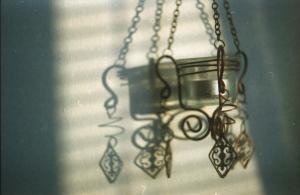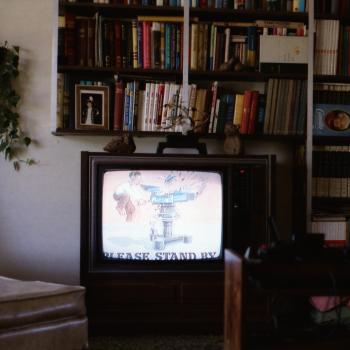 “People caught in a homeland-trap,” writes the late Israeli poet Yehuda Amichai in “National Thoughts,” a poem from the mid-1960s.
“People caught in a homeland-trap,” writes the late Israeli poet Yehuda Amichai in “National Thoughts,” a poem from the mid-1960s.
The homeland (Israel) is a trap? In the eyes of hundreds of thousands of refugees who, to escape persecution, fled there from Russia, Poland, Germany, Syria, Yemen, Ethiopia, and…? In the eyes of the many American Jews who made aliyah (rose up! immigrated to) first to the British Mandate of Palestine, later to the modern State of Israel?
I’m watching The Gatekeepers. An Academy award nominee for best feature-length documentary, The Gatekeepers features interviews of six former heads of Israel’s Shin Bet, the secret service charged with overseeing Israel’s war on terror—Palestinian and Jewish terror.
With understated pleasure and subdued pride, Carmi Gillon, director of the Shin Bet from 1994 to 1996, recounts the “nice and tidy” assassination of Yahya Ayyash, the “engineer” of some of the bloodiest attacks on Israel in the 1990s.
What makes for a nice and tidy assassination? A cellphone rigged to explode when Ayyash holds it to his ear to speak to his father. No collateral damage. No one on the first floor (Ayyash was on the second floor) hears the explosion. “Clean and elegant,” says Gillon.
In the dark theatre, in the full house, in the privacy of my seat, I’m quietly proud of the precision and care (no collateral damage) with which this assassination was carried out. An American Jew caught in the pride-in-his-people trap.
I’m watching 5 Broken Cameras. An Academy award nominee for best feature-length documentary, 5 Broken Cameras is the video-journal of Palestinian farmer Emad Burnat. In the film, Burnat documents life in Bil’in, his village on the West Bank, during the first five years of his youngest son’s life.
Born in 2005, Gibreel’s early years coincide with a period of non-violent protests by the residents of Bil’in in opposition to the location of Israel’s security fence. It cut through land owned by the villagers. It put some of their olive trees beyond their reach.
Burnat’s cameras record it all: olive trees being torn from the earth by Israeli bulldozers; Israeli soldiers invading the village at night, arousing residents and ordering them out of their homes; protesters wounded by teargas canisters and rubber bullets; a funeral procession led by a group of mourners wearing masks bearing the image of Bassem Abu Rahmeh, a beloved member of the community, who was hit in the chest by a teargas canister; Burnat’s brothers’ arrests and even his own arrest and, after a brief imprisonment, return to the village.
“The only way I could protect him,” says Burnat of his young son Gibreel, “was to let him see everything with his own eyes.”
Burnat’s comment frees me, for a moment, from the Israeli-Palestinian-conflict trap. Have I been a good father?
Did I protect my three kids by letting them see everything with their own eyes? In quiet Asheville, North Carolina? In our comfortable, white neighborhood? In our Jewish community? Among our closest friends, smart, thriving professionals? What suffering is there to see, to experience, here, day by day by day?
Illness, yes. Routine marital tension, yes. Rabbis who please until they disappoint, disappoint until they are gone and replaced by the next rabbi who will please and disappoint and go, yes.
But from within the shelter of my self-selected society (“The Soul selects her own Society— / Then—shuts the Door”; thank you, Emily Dickinson), it’s not easy to see suffering caused by institutional, economic, cultural injustice and indifference.
I’m caught in the life-in-my-own-neighborhood trap.
While I choose not to drive out of my way to see local suffering and its causes, I’m driven to welcome “the situation,” as it’s called, the conflict—its causes, its consequences—into my home.
Though the neighbors to my left and right and immediately across the street from me are not, my “neighborhood” is Jewish. Take a left out of my driveway and head straight toward Jerusalem.
“On YouTube, you can find hundreds of videos showing the other side of this story/fence, Israeli soldiers being injured by rocks hurled by Palestinians,” says a fierce defender of the homeland during the discussion following the screening of 5 Broken Cameras.
It’s the this-side/that-side, their-side/our-side trap. Twins, the two sides go everywhere together. They go together to the Academy Awards. Together, they visit Asheville.
And look who comes with them! Like twins, triplets, quadruplets, quintuplets, sextuplets, septuplets…Religious Zionists and the Ultra-Orthodox! They’re everywhere, and they’re multiplying!
In The Gatekeepers, the Religious Zionists burn images of Yitzhak Rabin. They are whipped into a frenzied rage until they can no longer distinguish between Mordechai and Haman (Happy Purim!), Arafat and Rabin. Their weapon is loaded, cocked, and aimed. Shalom, chaver, farewell, friend, President Clinton says at Rabin’s funeral.
In 5 Broken Cameras, in black (hats) and white (shirts), the Ultra-Orthodox populate the clean streets of Modi’in Illit, indignant when their neighbors, the villagers of Bil’in, protest that their sterile apartment buildings are built on stolen land.
And the plot to blow up the Dome of the Rock is uncovered. The Dome of the Rock: a magnificent shrine on the Temple Mount in Jerusalem, housing the rock which some identify as the rock from which Muhammad ascended to heaven on his famous night journey and which some identify as the rock on which Abraham bound Isaac. It stands on the spot where the Temple once stood and where, some Jews pray, one day it will be rebuilt.
Jews caught in a redemption trap.
Jewish terrorists arrested, tried, convicted…and, after only a fraction of a prison sentence is served, released. Much to the dismay of the leaders of the Shin Bet, men who discover the limits of their power to protect Israel—from external and internal threats.
One story theirs, the other story ours; one story yours, the other story mine. There (Israel and Palestine) and here, right here where we sit: people caught in a homeland trap.











